Many different decorative plants and shrubs in our gardens came from forests, where they grow in a wild form. Usually it is not entirely remarkable and bright plants and are used only to landscap. But there are completely different who possess not only decorative qualities, but also useful delicious fruits. These include honeysuckle - a long-term shrub with bright blue berries, which have an unusual taste and containing many useful elements.
Today, more and more plants begin to grown in the conditions of the climate of Siberia and the Urals. No exception and honeysuckle, which, by numerous reviews, can withstand strong frosts and quite a day to give their delicious fruits. The honeysuckle, landing and care in the Urals behind which is not at all difficult, will become an excellent decoration of the household plot.
In this article, consider the peculiarities of the cultivation of the honeysuckle in the Urals, we present the characteristic of the honeysuckle varieties for the Urals, we note the important moments of planting and care for this plant.
Features and description of the honeysuckle in the Urals
Many gardeners for a long time believed that the honeysuckle in the conditions of the Urals is a waste of time. These plants grow in the wild of Siberia, so it is not advisable to use garden forms in a cold climate. Can be content with wild plants. However, it was worth one gardener all the same to decide on the landing on its seedling site and everyone immediately became clear that even the garden varieties of this culture could withstand frosts up to -35-40 degrees. Of course, any culture grown in the Urals requires special care, but it is quite realistic to get positive results and delicious fruits.
The honeysuckle is a perennial shrub, which refers to the family of hiring. In nature, this plant was widely distributed in the territory of the northern hemisphere, the most massive accumulation of wild honeysuckle is observed in the Himalayas and East Asian area. Today in nature there are about 200 different types of honeysuckle, among whom the honeysuckle edible and honeysuckle Kamchatka received the greatest popularity. Lonicera received its scientific name in honor of the German doctor and botany Adam Lonicera, who worked in the Middle Ages and published a popular book at that time - "Book of herbs." However, the very emergence of a botanical description of this culture is connected with Karl Linnem, which for the first time qualified the honeysuckle. He wanted to call this shrub honeysuckle honeycomb. In the Urals and other parts of Russia and Europe, the most popular variety with edible berries in the 16th century.
In their biological peculiarities, the honeysuckle was widely distributed in the cold and temperate regions, since the southern territories are not quite suitable for this plant. The honeysuckle is very lightweight and easy to leaving the plant even in the Urals, in cold and tightening winter conditions. Knowing all the features of this plant and the formation of plant growing, one can clearly imagine how to prepare the honeysuckle to winter in the Urals and collect the rich harvest of useful berries for the next season.
Description of the honeysuckle:
- First of all, the honeysuckle is a perennial plant, which in nature can be represented by several vegetable forms. You can meet in the wild of Siberia or the Urals, a smoking honeysuckle, which goes or a represented shape of a shrub.
- Most often, the honeysuckle is grown with edible and honeysuckle blue, which differ delicious and useful berries.
- In height, this plant can reach about 1-2.5 m. It is a branched shrub of various shapes.
- The stalks are covered with yellowish-brown, sometimes with a red tint of the bark, which is easily peeled with stripes. This can be done even with hands without effort.
- The crown of the honestiness is most often spherical and very compact, formed by densely young escapes of greenish color.
- The leaves have an oblong lancing or elliptical form, in length reach approximately 6-7 cm, and wide up to 3 cm. The color of the leaves is saturated green.
- Flowers have a funnel shape, differ in various shades depending on the specific species. For example, the intake honeysuckle has pale yellow flowers collected by pairs in the sinuses of the leaves.
- The bloom of honeysuckle begins approximately at the end of May or in early June.
- The plant is characterized by good sophistication resistance to spring frosts.
- The honeysuckle is popular as the earliest fruitless plant - berries appear on branches at the beginning or at the end of June. At this time, all other berries are just beginning to be bought.
- In addition, the berries of the honeysuckle can be collected to the most frosts.
- The berries of the honeysuckle of a dark blue color with a sizerna, depending on the variety, there may be the most different shape - a rounded, oblong, oval, elliptical.
- The flavor of the berries is with sourness, bitter-sweet, very sweet. Ripening is uneven, so it is necessary to collect berries in several techniques, since immediately after ripening they fall out for a long time not stored.
- All gardese varieties of honeysuckle are visible, so to obtain a crop you need to plant a few bushes.
- The honeysuckle is a long-liver - in one place can grow and give a harvest to 80 years.
- The honeysuckle in the Urals begins to give a harvest from 4-5 years after landing.
- The plant is characterized by good frost resistance and unpretentiousness in care.
Hireness varieties for the Urals
In gardening, the honeysuckle began to use only in the 80s of the last century. Since then, a large number of varieties have been derived both edible and decorative honeysuckle. Many of their garden forms can perfectly grow in the conditions of the Urals, give rich yields and without problems to winter. It was Russian breeders who brought many varieties of honeysuckle that responds to the climatic zone of the country, the requirements of gardons, in a variety of honeysuckle varieties. There is a honeysuckle of foreign selection on the market, which also has stunning qualities and features, but it is not always possible to find the necessary variety. Consider the sweetest varieties of honeysuckle for the Urals.
- Grade "Sichka". This honest grade was removed from the plants brought from the Far East, the Urals and Siberia. It is a high reprehensive bush that can grow up to 2 meters. It has a strong growth and rounded compact form. The berries of this variety are distinguished by the sour-sweet taste and low degree of squeeziness, as well as early maturation. The honeysuckle pan has a good level of winter hardiness and unpretentiousness in care.
- Sort of honeysuckle "Blue Bird". Refers to early grades, as the berries begin to ripen by mid-June. The yield of the honeysuckle is approximately 2 kg, which corresponds to the average indicators. Berries have an oblong cylindrical forms, the weight of one can be 0.7 gr. The variety is characterized by good resistance to temperature drops. By minuses include a high level of appearances of berries after their maturation.
- Grade "Blue spindle". Also grade early ripening. Berries have the form of spindle, hence the name of the variety. One of the features is the fact that in the absence of irrigation at the beginning of ripening fruit berries may have a bitter taste. This grade has good resistance to strong frosts, but the berries after ripening are very creepy.
- Sort "Nymph". It is a weak-winged bush, which in height can reach about 1.5-1.8 m. The honeysuckle of this species is characterized by good frost resistance, which is an indispensable quality for growing in the Urals. Fruits are large, slightly curved shape. To taste the berries of sour-sweet.
- Grade "Bazhovskaya". This variety is considered one of the most valuable among plants with a medium-time maturation. High height honeysuckle with oval compact crown form. Berries are large, weighing up to 1.5 grams. The yield of the variety is medium, up to 1.8 kg from the bush. Berries are very sweet and juicy, little crept.
- Grade "Choosing". Honey bushes are low to 1.5 m in height, thick and dense crown. Refers to late periods of ripening berries. The variety has a high yield - about 3 kg of berries with a bush. Berries are very sweet and juicy with a strong aroma.
- Grade "Amazon". It is a very winter-hardy variety of honeysuckle, which is characterized by a very early ripening of fruits - in early June you can already collect a crop. Berries are large up to 1.6 grams, elongated with tubercakes, dark blue with bloom. To taste the berries sweet or sour-sweet.
- Grade "Maria". Also relates to early maturation with a large harvest - up to 1.5 kg of berries from one bush. Berries are large, dessert taste, with a slight appeal during maturation. The weight of one berry is approximately 1.1-1.6 grams. Brush the crop begins only for 3 years, berries ripen by mid-June.
- Grade "Bakcharskaya". This variety is characterized by early ripening, but with a stretched period of fruiting. Berries at the honeysuckle do not appear after ripening, have a sour-sweet taste without bitterness. Bushes with high yields, up to 2.5 kg from one plant. The weight of one berry is approximately 0.9-1.1 grams.
- Grade "Kamchadalka". This is an early honest grade with friendly fruiting and ripening. Berries with sour-sweet taste, large, the weight of one can be 1.1-1.8 grams. The yield of the bush is very high, up to 2.8 kg from one plant of the honeysuckle. Berries after ripening do not appear.
- Sort "Yugan". The variety is distinguished by the average ripening of fruits. Berries are large, the weight of one is approximately 1.4-1.8 grams. The yield from one bush reaches 3.4-6.7 kg. Berries with sweet taste, very juicy and fragrant.
Genuine reproduction in the Urals: the most common ways
The honeysuckle can be independently diluted at home. For the Urals, the same methods of breeding are characteristic as for other regions and climatic zones. For the honeysuckle, the reproduction of seeds, green and weed-to-wear cuttings, grains. Each option has its own characteristics and rules that must be taken into account in order to further get a healthy and strong plant bringing a large harvest. However, in the cultivation of honeysuckle in the Urals, it is better to give preference to the vegetative methods of reproduction, since the seed cultivation requires a longer period of growth and costs a lot of effort.
Reproduction of honeysuckle in the Urals green cuttings
- The best period for the workpiece of green cuttings is the beginning of the ripening of fruits. It comes from about mid-May.
- An annual green shoots are used as a planting material, of which the cuttings of 10-12 cm with 2-3 kidneys are cut on each. For better rooting, it is better to harvest stalks with a heel, i.e. tear down the escape along with part of the bark.
- When cutting cuttings, the lower cut must be made at an angle of a sharp knife for about 8 cm under the interstille. Upper slice straight.
- All cuttings before planting in the prepared primer must be treated with a growth stimulator solution.
- Next, you must prepare a wooden container filled with pure washes.
- In the sand you need to make a wand or a regular pencil deepening under the tilt and then stalks insert into it. It is necessary in order not to damage the lower cut.
- After rooting, the entire container must be covered with a film to create a greenhouse condition.
- Further cutting care will be in constant ventilation, watering and good lighting without direct sunlight.
- The rooting of green cuttings occurs around 2-2.5 weeks.
- The landing is carried out in the fall of honeysuckle in the Urals at a permanent place.
Reproduction of honeysuckle in the Urals with weeds
- The planting material for reproduction with withdrawal cuttings is harvested after the focus of all foliage.
- To do this, choose strong and healthy annual shoots and cut them off.
- Then they are collected together and placed on storage in the refrigerator or in the garden to the garden until the spring.
- In the spring, the planting material is cut into the desired amount of cuttings with a length of 15-18 cm.
- Next, you must prepare a wooden box or other container and fill it with clean sand.
- The cuttings in front of the landing can be held for some time in the solution of the cornetering agent for better rooting.
- The cuttings are planted at an angle, gluing almost completely, only one kidney remains on the surface.
- Planting is abundantly watered and covered with glass. Next, the container is put in a warm and bright place.
- Showing cuttings in this way occurs during the month.
Reproduction of honeysuckle in the Urals
- This is another popular method of vegetative reproduction of the honeysuckle in the Urals, which successfully use gardeners.
- It is necessary to conduct such reproduction in early spring until the moment of active vegetation.
- To do this, it is necessary to choose strong and healthy side shoots on the plant, and the ground around the honeysuckle is thoroughly wrapped and explode.
- After that, the selected shoots-grooves are flexible to the soil and put on the ground by 5-6 cm, leaving only the top of the escape.
- For the summer period, it is necessary to plunge the soil three times on the pump, water and loose.
- In the fall, a young sapling honeysuckle can be disconnected from the maternal bush and transplant to a permanent place.
Preparation before landing the honeysuckle in the Urals
Landing the honeysuckle in the Urals has its own characteristics that need to be clearly observed that the plant does not die. It is important to spend thorough preparatory work on the acquisition of high-quality planting material and the search for the perfect room for landing honeysuckle. It is also important to understand when you plant the honeysuckle in the Urals.
Stage 1. Selection of varieties and saplings of honeysuckle in the Urals
- To land this plant in the Urals, it is necessary to buy only the zoned varieties of honeysuckle, which were derived specifically for this territory and have a high level of winter hardiness and early fruiting.
- Gardeners are recommended to buy seedlings of several varieties of honeysuckle. This will increase the quantity and quality of the future harvest.
- Buying honeysuckle seedlings is necessary in specialized garden centers or stores, where you can simultaneously get professional advice on the rules for planting selected plants in the Urals.
- It is important to purchase a healthy and high-quality seedling. For landing in the conditions of cold winters of the Urals, pay attention to the seedlings for 3-4 years, they are better leaving and faster begin to give a crop.
- Saplings-three years must have 3-4 elastic branches 40 cm long.
- Buy honeysuckle saplings can be in a container or with an open root system.
- It is recommended to carefully inspect a young plant before buying. The roots of the honeysuckle should be well branched with a large number of small roots.
- Soil in containers should be clean and assembled around the root system.
- The seedling should have a large number of kidneys, if there is no, then you should not buy this young plant.
- If you saw the peeling of the bark on the seedlings. Do not be scared, for honeysuckle it is normal.
Stage 2. Choosing a place to land for honeysuckle in the Urals
- To plant the honeysuckle, it is best to choose a place with a heavy and well-structured soil, which can be a loamy or clay type with good moisture.
- Also good yields give honeysuckle in the Urals, if you put it on a fertilized nutrient soil.
- It is not recommended to disembark the saplings of the honeysuckle in lowlands or in places of groundwater location - the plant does not like long stagnation of water in the roots.
- This plant prefers to grow at open solar places, some varieties can carry a light shadow.
Planting the honeysuckle in the Urals - instruction
- The best time to plant the honeysuckle in the Urals is the end of the spring or the beginning of summer when planting seedlings with an open root system and a month before the frosts for seedlings in containers.
- It is recommended to prepare the soil for planting and pit in the spring. For this purpose, the site is thoroughly drunk and loosen, after that landing pits are digging and refilled with mineral fertilizers. During the season, such pits need to constantly loose.
- The sizes of the pits should be very large, about 1 m depth and 1 m wide. At the same time, at the bottom of the pit necessarily need to put a good layer of drainage in the form of small stones or broken bricks.
- After that, the seedlings are placed in prepared pits, which for a long time are filled with loose compost.
- Saplings must be plugged in such a way that its lower branches are permanent than the soil.
- It is impossible to add fertilizers under the roots of seedlings after landing.
- After planting, the plants watered and mulch the rolling circle of a special mulch. To do this, you can use sawdust, chevy, peat, grass or sfagnum.
How to properly care for the honeysuckle in the Urals
The honeysuckle is simple in leaving the plant, the cultivation of which in the conditions of the climate of the Urals differs little, from other regions.
- Watering. The honeysuckle need to learn how to water correctly. This plant does not tolerate the convergence, but in regular moisture needs, especially during dry summer time. For one plant, three buckets of water are enough. At the same time, it is important to pour the saplings of the honeysuckle in two important periods: during flowering and during the ripening of fruits. If you do not pour your honeysuckle at this time, you can lose half of the crop.
- Loosening and mulching. Periodically, the soil in the attractive circle needs to loosen and remove weeds. Mulch is an important component of full care for the honeysuckle. This will reduce the amount of moisture evaporation. As a mulch, you can use sawdust, chevy or moss.
- Feeding. First year after landing, the plant does not need to feed. However, after that, fertilizer should be regular. To do this, it is possible to dig a special groove around the attractive circle and make fertilizers through it. This will significantly speed up the flow of nutrients to the roots, which is necessary in the conditions of early winter in the Urals. With a lack of fertilizer, the plant may not have time to give a harvest before the winter.
- Trimming. It is important to regulate the growth of the crown of the honeysuckle, as the thick shoots, the worse the harvest becomes. It is necessary to begin to trim down from the third year of the life of the bush. All damaged and broken branches are removed for this. Typically, shoots are shortened to 20 cm, it is especially important to fully open the lower part of the escape - so more colors appear.
- Preparation of honeysuckle to winter in the Urals. Before the onset of winter, it is important to cut all old and damaged shoots that can become a seedler of diseases. The lower branches necessarily plunge the soil, and the rolling circle should be closed with coniferous branches - this will protect the plant from rodents.
Photo of honeysuckle
The honeysuckle in the Urals is quite realistic, as its landing and care is not much different from growing this plant in other regions. It is important to pay a seedling maximum attention and honeysuckle will give you a big yield of delicious and useful berries.

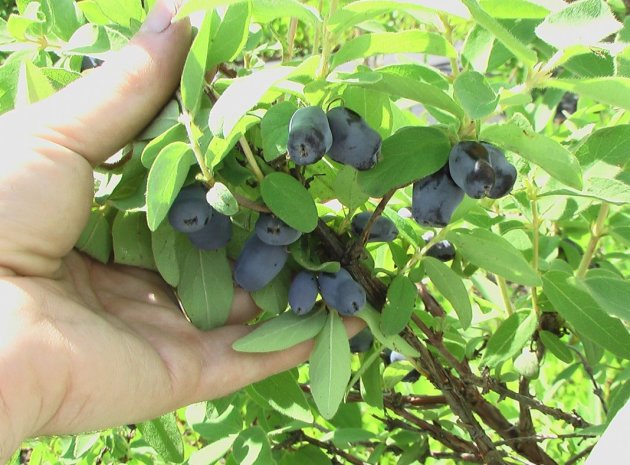
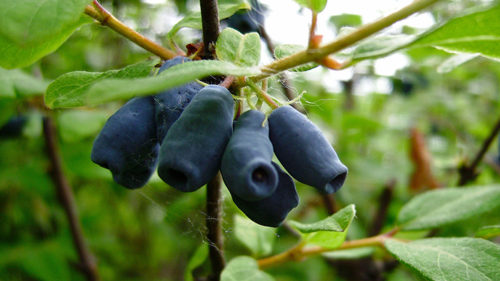
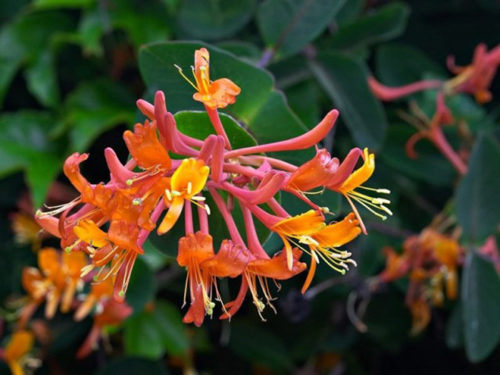
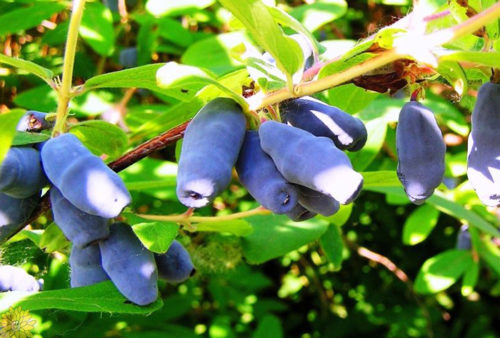
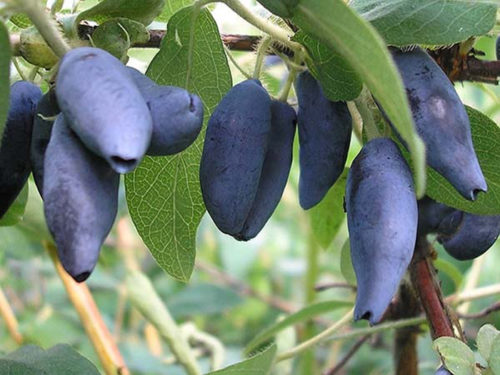
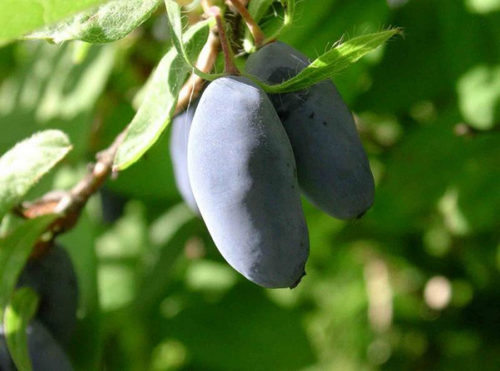
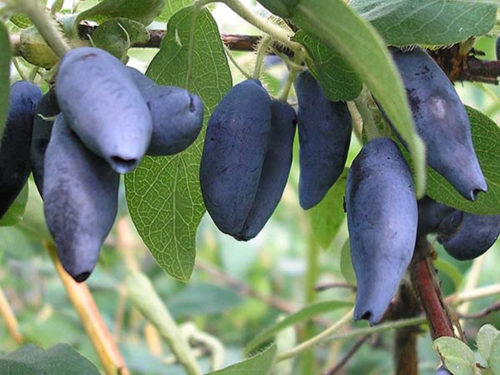
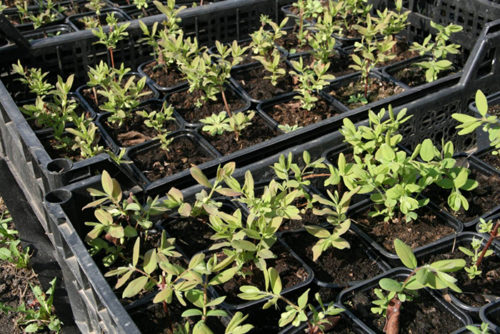
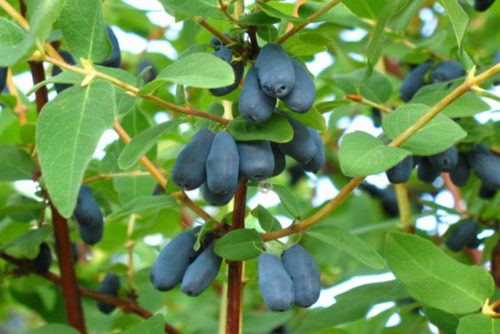
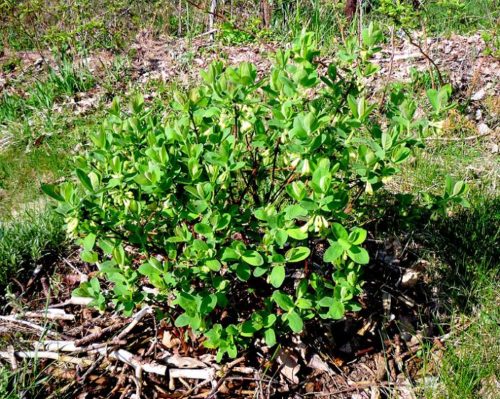
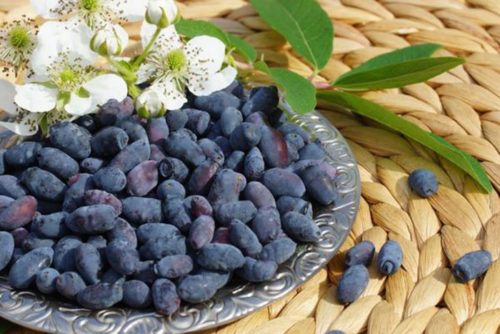
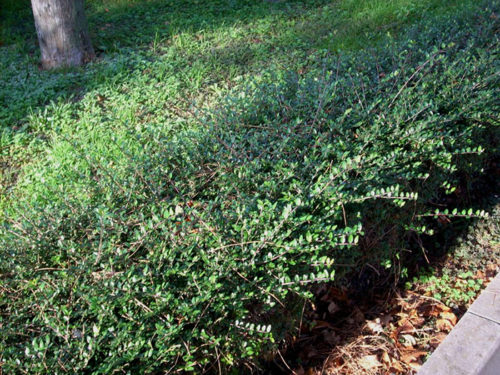
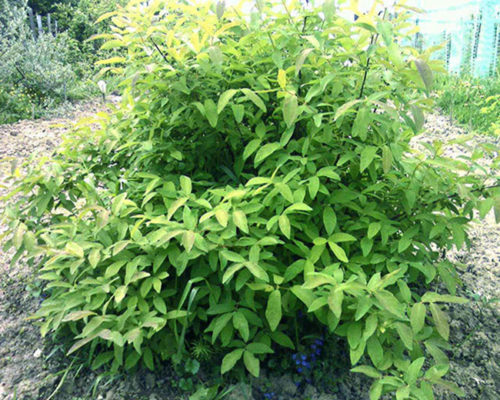
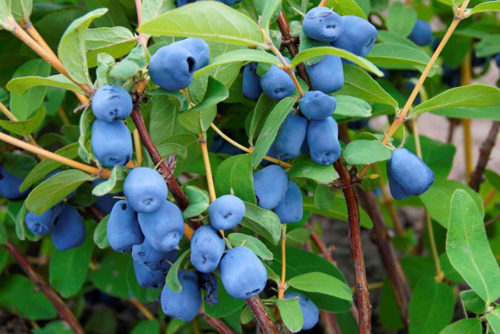
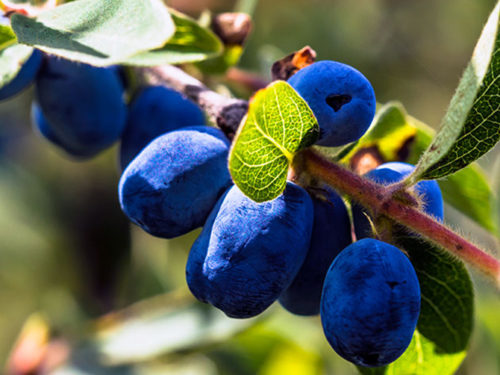
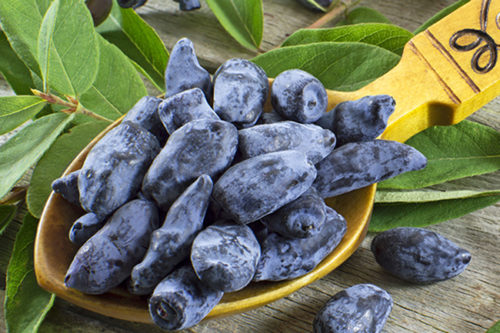












 Start a discussion ...
Start a discussion ...